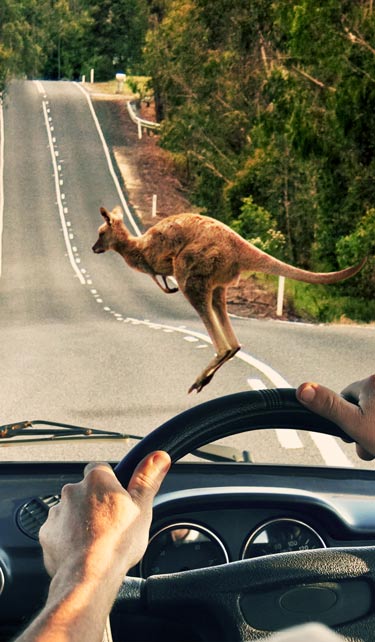Animals On Country Roads With most of NSW affected by drought and bushfires, increased numbers of wildlife and livestock on the roads pose an added risk to motorists.
The severe shortage of feed has forced farmers to graze stock on the roadsides, while cattle that have escaped in search of feed can be more unpredictable and present a serious road safety danger.
Wildlife, especially kangaroos and wallabies, are also drawn to the roadside, attracted by the feed watered by run-off from the roads.
Temporary warning signs in areas where cattle graze and also in native animal hotspots urge motorists to slow down and watch for animals on the roads.

Safe driving tips
One in every 41 casualty crashes on country roads involves a vehicle hitting an animal. Kangaroos, wombats and stray stock can move fast and be extremely unpredictable. When animals stray onto the road it’s hard to know what they’ll do next. Slowing down and being prepared, especially near sunrise and sunset, could save a collision or even save your life.
- Be aware – animals are more active near waterholes and creeks, and harder to see at sunrise and sunset
- Reduce your speed – slow down when you see animal warning signs
- Stay alert – animals are unpredictable, so expect the unexpected
- Brake safely – always apply your brakes in a controlled manner
- Never swerve – it is safer to hit an animal than swerve and lose control of your vehicle
- Report injured wildlife – call WIRES on
1300 094 737
If drivers come across a horse being ridden on the road, they should:
- Slow down and allow plenty of room
- Never sound the horn, rev the engine or pass at high speed
- Slow down or stop if the rider is having difficulty.
